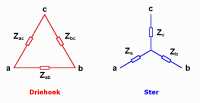LRGS253
Lifetime VIP Member
Is there a good reason why not to fit a double socket in the side of the kitchen unit. I guess it will probably be down to load on the cable?
No reason why not. Just be aware of the current/power requirement.Is there a good reason why not to fit a double socket in the side of the kitchen unit. I guess it will probably be down to load on the cable?
You can't compare a house and a camper(van) one to one.I wonder why it’s acceptable to have the Factory fitted mains socket within millimetres of the sink? You wouldn’t get away with it in your home.
I use a short 2 socket extension lead rather than any permanent mod to the Cali.
To answer your question, no, I wouldn’t want the socket in the boot. I was simply making an observation! But I do think the position is particularly vulnerable to spillage.You can't compare a house and a camper(van) one to one.
There just isn't enough space to put the sockets somewhere else, not within reach of you standing with one hand in the water. You'd better like to have the 220v socket in the boot?
I understand you cannot compare camper with house/dwelling and their installation regs. But surely the dangers are similar. And you do wonder why of all places within a Cali they had to put the mains socket within inches of the sink.You can't compare a house and a camper(van) one to one.
There just isn't enough space to put the sockets somewhere else, not within reach of you standing with one hand in the water. You'd better like to have the 220v socket in the boot?
That surely is right.To answer your question, no, I wouldn’t want the socket in the boot. I was simply making an observation! But I do think the position is particularly vulnerable to spillage.
No, I don't wonder why.I understand you cannot compare camper with house/dwelling and their installation regs. But surely the dangers are similar. And you do wonder why of all places within a Cali they had to put the mains socket within inches of the sink.
Maybe I’ve missed something with video but it seemed to demonstrate that there was no safety cut out when the live sockets were saturated in water and that it would likely that the water would be carrying mains current And therefore a hazard.That surely is right.
No, I don't wonder why.
But if you look closely, in big whites, the sockets mostly are in the direct neighbourhood of the sink too. On the other hand, in big whites, they have space above the sink, instead of under the sink of course.
But because of the safety switch, there will be no problems if water gets in the socket.



The VW California Club is the worlds largest resource for all owners and enthusiasts of VW California campervans.

